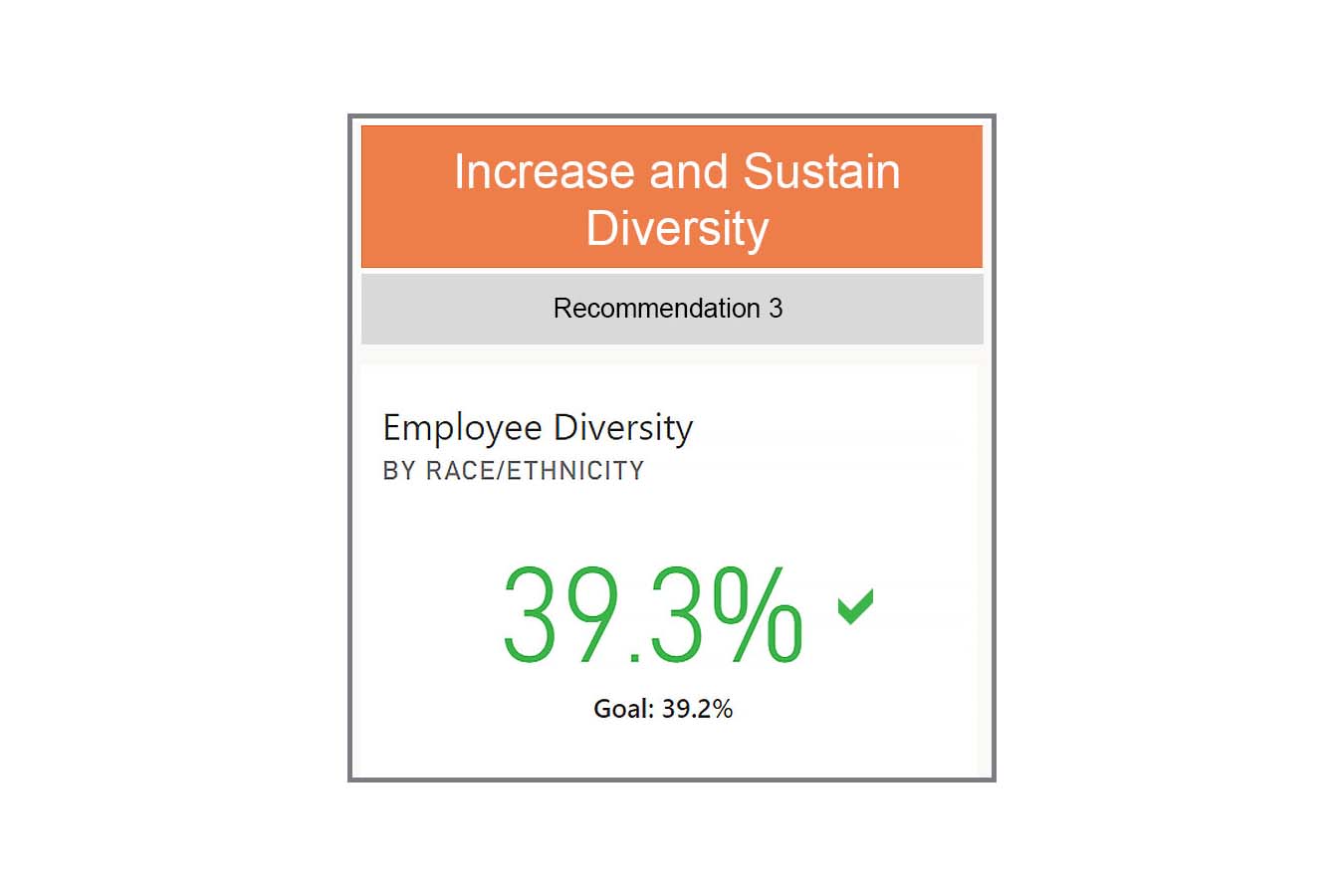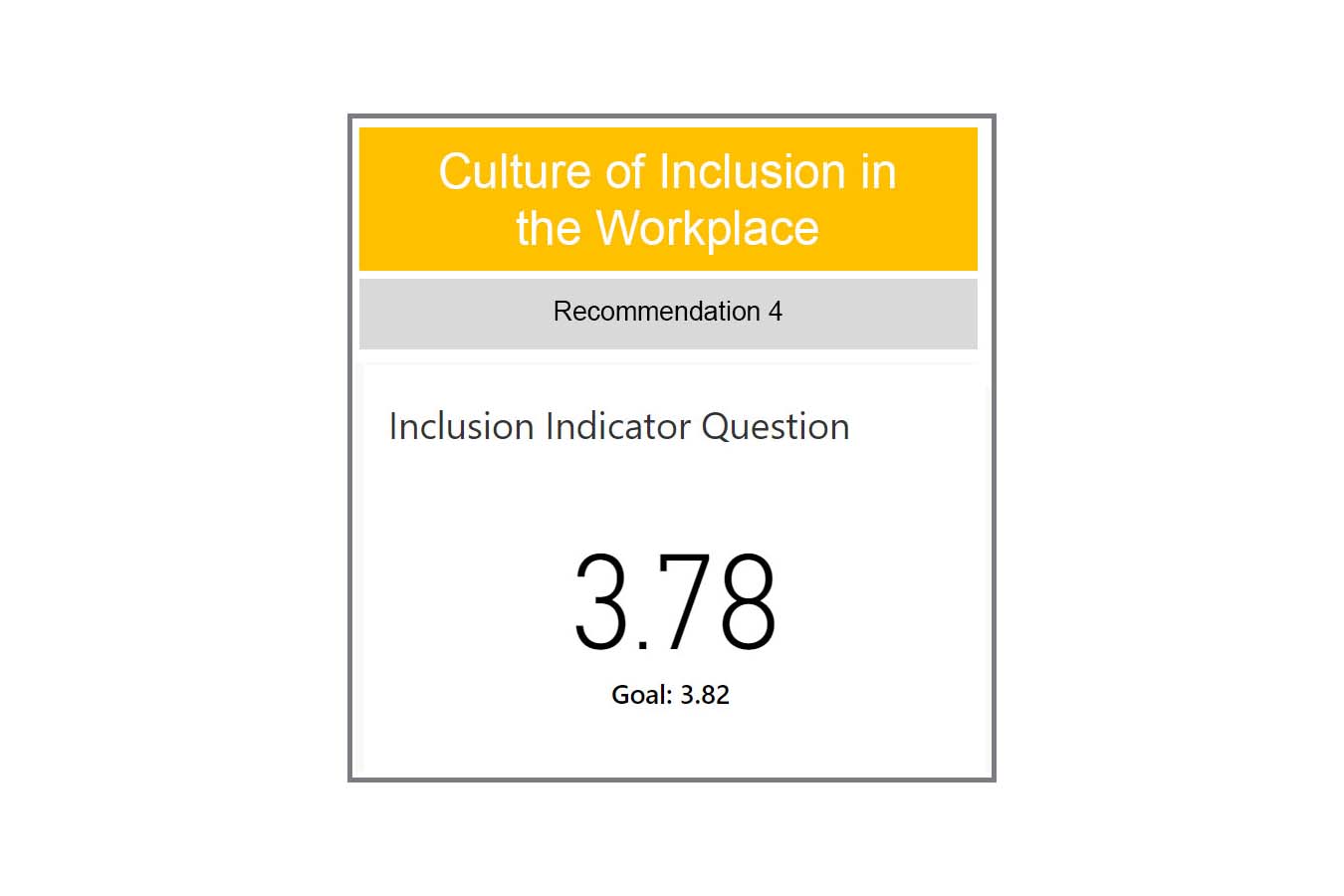
Health Equity and Anti-Racism Action Plan
June 2022 Quarterly Progress Update (Q3)
Health Equity and Anti-Racism Action Plan
A group of committed workforce members created the Health Equity and Anti-Racism Action Plan to prioritize the most powerful actions to address systemic racism within Seattle Children’s from late 2021 through 2024.
“The Odessa Brown Children’s Clinic (OBCC) has provided high-quality care with dignity to those who need it most for more than 50 years. Our clinic’s namesake, Odessa Brown, was herself denied healthcare because she was Black. She fought for the creation of OBCC so that future generations would not experience the same injustices she and her family endured. Throughout Seattle Children’s, including OBCC, work continues to fully achieve Odessa Brown’s vision. We know there is more to do and are actively working, still fighting, and fully committed to become an anti-racist organization.”
Read more of the introduction letter (en Español) from Dr. Shaquita Bell, senior medical director, Odessa Brown Children’s Clinic, and Aaron Williams, director of business operations, Odessa Brown Children’s Clinic.
Taking Action
The Seattle Children’s Health Equity and Anti-Racism Action Plan has eight commitments and nine outcome measures for fiscal year 2022. Learn more about what the organization is committing to over the next few years and what progress is being made.

Commitment to Anti-Racism and EDI
Outcome measure
FY22 and FY23: Update Seattle Children’s values to include anti-racism to hold leaders and workforce accountable through the performance evaluation process.
June 2022 progress update
An initial draft of Seattle Children’s values-based behaviors and leadership qualities that incorporates anti-racist language will be shared with the HEDI Council’s Education and Leadership Committee and Inclusion Network leaders in June. Measures of accountability based on the updated language will be incorporated into the FY22 performance evaluations process.

Purpose and Decisive Action
Outcome measure
FY22: Link executive compensation to achievement of Action Plan outcomes.
June 2022 progress update
The Board of Trustees reviewed and adopted a revised executive compensation model, which includes four equity-related goals represented in the Action Plan. The executive leadership team is reviewing mid-year progress on the goals and will share with the Board in June.

Increase and Sustain Diversity
Outcome measure
FY22: Increase employee diversity by race/ethnicity to 40%, to further reflect patient population.
June 2022 progress update
The FY22 goal of 40% racial and ethnic diversity is tracked through quarterly milestones. The Q3 FY22 goal of 39.2% is being met, with a result of 39.3%. Ongoing work to increase employee diversity includes requiring hiring managers to attend inclusive and equitable recruitment training, redesigning the seattlechildrens.org careers site and incorporating new diverse recruitment videos, and expanding remote onboarding options for new hires.

Culture of Inclusion in the Workplace
Outcome measure
FY22: Improve scores on the Inclusion Indicator question “This organization values workforce members from different backgrounds” from 3.78 (FY21 baseline) to 3.82 out of 5. This represents a clinically significant increase.
June 2022 progress update
The most recent Workforce Engagement Survey, conducted in fall 2021, provides a baseline score for this question of 3.78 out of 5. The target score for FY22 is 3.82 (out of a best possible score of 5), which represents a clinically significant increase. The Workforce Engagement Survey, including the question, “This organization values workforce members from different backgrounds,” will be administered to our workforce in Q4 FY22.

Include All Patients on the EDI Journey
Outcome measure
FY22: The Behavioral Response Project will replace Code Purple with an equitable and anti-racist structure that is co-created with patients and families to ensure it is culturally responsive and provides psychosocial support.
June 2022 progress update
The co-design process is complete, resulting in a set of draft recommended solutions. The project team is now identifying resources, defining new processes, and creating a robust implementation plan with the collaboration of many subject matter experts and leaders related to this work.

Include All Patients on the EDI Journey
Outcome measure
FY22: Eliminate overall non-mucosal barrier injury central line associated bloodstream infection (non-MBI CLABSI) disparities for Black and African American patients and patients who use a language other than English.
June 2022 progress update
The dot color and symbol depict the completion status for the projects being implemented to reduce or avoid CLABSIs. Due to limited data and the risk of a single non-MBI CLABSI occurrence significantly skewing data, the non-MBI CLABSI rate will be reported yearly (October). Completed interventions include ensuring observation of care with central lines and transparency in data sharing with race ethnicity and language filter, and improving the formal CLABSI event review process with an equity perspective. Interventions to solicit feedback on central line care from patients who identify as Black/African American and patients who use a language other than English are in progress but behind schedule. Additionally, while the new CLABSI Champion LEAD program has launched, staffing shortages have resulted in these roles being reassigned from central line care to bedside care.

Listen to the Workforce, Patients and Families
Outcome measure
FY22: Improve the Family Experience Survey (FES) score from a baseline of 81.6% to 83.0% by Sept. 30, 2022. The target is set based on the performance of pediatric hospitals against whom we are benchmarked.
June 2022 progress update
After seeing an increase in the overall score on the “likelihood to recommend” question on the Family Experience Survey in the first quarter, the score has regressed to the baseline of 81.6% at the end of the second quarter. Day Surgery and the Emergency Department both improved in the second quarter — Day Surgery was unique in being the only survey area to surpass its annual goal. Unfortunately, Ambulatory and Inpatient survey results were lower, which pulled the overall score down. Ambulatory and Inpatient leaders have reviewed their results and have begun to implement a “get to green” plan.

Communicate Transparently
Outcome measure
FY22 Redesign reporting on anti-racism and equity, diversity and inclusion efforts and commit to quarterly reports.
June 2022 progress update
This report is the third of four reports committed to as part of the Action Plan, with the fourth scheduled for release in September 2022.

Lead the Way
Outcome measure
FY22 Contribute to the establishment of national health equity standards; actively engage through participation in the U.S. News & World Report Best Children’s Hospitals Health Equity/Disparities/Inclusion working group.
June 2022 progress update
Representatives from Seattle Children’s, along with people from 12 other pediatric hospitals across the country, participated in a U.S. News & World Report working group tasked with recommending a methodology to evaluate equity, disparities and inclusion in overall hospital quality assessment. New measures are incorporated into the recently released U.S. News and World Report 2022 survey; 2022-2023 Best Children’s Hospitals rankings release June 14, 2022.
"Our HEDI committee has shown that we value high standards in equity work for all workforce members, and in education that weaves anti-racist and inclusive leadership practices into the fabric of Seattle Children’s. The thoughtful discussions we have had with the leaders responsible for the new and updated trainings have really modeled self-reflection and accountability, which are essential parts of an anti-racist culture."
– Mari Moore, HEDI Education and Leadership Committee member and Nursing Professional Development Practitioner
Report Highlights

Odessa Brown Children's Clinic (OBCC)
OBCC is a Seattle Children’s community clinic with multiple locations including one recently opened in Rainier Valley (OBCC Othello). OBCC has a rich heritage of serving a diverse community with a team that reflects the communities served. Going beyond medical, dental and mental health care, OBCC provides coordinated, whole-person care that addresses root causes of illness — social, economic and environmental. Read more.

Languages Other Than English
All patients and their families deserve to feel empowered in their access to and choices around quality healthcare. Interpreter and Translation Services provides critical support to patients and families who use languages other than English to ensure everyone has access to the information and services needed for healthy outcomes. Seattle Children’s commitment to improving the experience of patients and families who use a language other than English is focusing efforts on: 1) stabilizing the Interpreter and Translation Services program to prepare for future growth and improvements, 2) expanding various programs such as access to video interpreters and 3) trying new approaches to providing care using interpretation and translation for languages other than English. Read more.
Review Quarterly Progress Updates
September 2022 web page, September 2022 (PDF) (en Español)
June 2022 web page, June 2022 (PDF) (en Español)
March 2022 web page, March 2022 (PDF) (en Español)
December 2021 (PDF) (en Español)